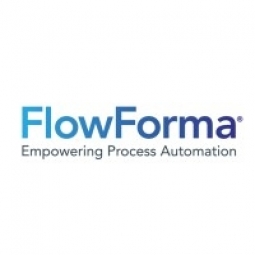公司规模
Large Corporate
地区
- Europe
- America
国家
- Ireland
- United States
产品
- FlowForma Process Automation
技术栈
- Microsoft SharePoint
实施规模
- Enterprise-wide Deployment
影响指标
- Productivity Improvements
- Cost Savings
技术
- 应用基础设施与中间件 - 数据交换与集成
适用行业
- 药品
适用功能
- 质量保证
用例
- 监管合规监控
- 过程控制与优化
服务
- 系统集成
- 培训
关于客户
客户是一家全球制药公司。该公司业务分布广泛且发展迅速,在多个国家开展业务。该公司已经实施了 Microsoft SharePoint® 来改进文档流程。该公司的 IT 经理负责寻找为企业提供更高质量的连接和应用程序的方法。该公司的艺术品管理流程复杂且受到严格监管,涉及多个国家/地区的多达 10 人。该公司面临着压力,需要在不同国家/地区满足监管机构艺术品审批的不同时间表。该公司需要一种能够提供流程控制和可见性的解决方案,尤其是在行业抽查和严格检查日益增多的情况下。
挑战
客户是一家全球制药公司,其图稿管理流程面临重大挑战。图稿错误被认为是制药行业产品召回的最大原因。图稿的更改必须在有限的时间内得到监管机构的批准,制造商面临着满足不同国家不同时间表的压力。在实施 FlowForma 流程自动化之前,图稿是通过大量电话和电子邮件批准的,通常涉及多个国家的多达 10 个人。该流程缺乏清晰度、时间表、警报和可追溯性,导致管理不善和集团监督不力。随着行业抽查和严格检查的增加,客户需要获得对流程的控制和可见性。
解决方案
引入 FlowForma Process Automation 是为了简化艺术品管理流程。由于公司不断发现可以利用的更多功能,因此部署时间比计划的要长。FlowForma Process Automation 用于提供两个工作流程。一个用于推动艺术品模型获得监管机构的预先批准,另一个用于实际生产成品艺术品并提出变更请求。这家位于欧洲的设计工作室负责制作艺术品并与世界各地共享文件以供批准。基于表单的解决方案经过一个迭代过程,其他地区的人们通过自动化工作流程输入他们的更改。艺术品协调员上传最终版本并将其提供给计划推出产品的每个市场。与其他标签解决方案不同,FlowForma Process Automation 一直持续到审计跟踪结束时产品被发布到制造现场。
运营影响
数量效益

Case Study missing?
Start adding your own!
Register with your work email and create a new case study profile for your business.
相关案例.

Case Study
Case Study: Pfizer
Pfizer’s high-performance computing software and systems for worldwide research and development support large-scale data analysis, research projects, clinical analytics, and modeling. Pfizer’s computing services are used across the spectrum of research and development efforts, from the deep biological understanding of disease to the design of safe, efficacious therapeutic agents.

Case Study
Fusion Middleware Integration on Cloud for Pharma Major
Customer wanted a real-time, seamless, cloud based integration between the existing on premise and cloud based application using SOA technology on Oracle Fusion Middleware Platform, a Contingent Worker Solution to collect, track, manage and report information for on-boarding, maintenance and off-boarding of contingent workers using a streamlined and Integrated business process, and streamlining of integration to the back-end systems and multiple SaaS applications.

Case Study
Process Control System Support
In many automated production facilities, changes are made to SIMATIC PCS 7 projects on a daily basis, with individual processes often optimised by multiple workers due to shift changes. Documentation is key here, as this keeps workers informed about why a change was made. Furthermore, SIMATIC PCS 7 installations are generally used in locations where documentation is required for audits and certification. The ability to track changes between two software projects is not only an invaluable aid during shift changes, but also when searching for errors or optimising a PCS 7 installation. Every change made to the system is labour-intensive and time-consuming. Moreover, there is also the risk that errors may occur. If a change is saved in the project, then the old version is lost unless a backup copy was created in advance. If no backup was created, it will no longer be possible to return to the previous state if and when programming errors occur. Each backup denotes a version used by the SIMATIC PCS 7 system to operate an installation. To correctly interpret a version, information is required on WHO changed WHAT, WHERE, WHEN and WHY: - Who created the version/who is responsible for the version? - Who released the version? - What was changed in the version i.e. in which block or module of the SIMATIC PCS 7 installation were the changes made? - When was the version created? Is this the latest version or is there a more recent version? - Why were the changes made to the version? If they are part of a regular maintenance cycle, then is the aim to fix an error or to improve production processes? - Is this particular version also the version currently being used in production? The fact that SIMATIC PCS 7 projects use extremely large quantities of data complicates the situation even further, and it can take a long time to load and save information as a result. Without a sustainable strategy for operating a SIMATIC PCS 7 installation, searching for the right software version can become extremely time-consuming and the installation may run inefficiently as a result.

Case Study
ELI LILLY ADOPTS MICROMEDIA’S ALERT NOTIFICATION SYSTEM
Pharmaceutical production is subject to a strict set of enforced rules that must be adhered to and compliance to these standards is critically necessary. Due to the efforts of WIN 911’s strategic partner Micromedia, Lilly was able to adopt an alarm notification infrastructure that integrated smoothly with their existing workflows and emergency hardware and protocols. These raw energy sources enable the industrial process to function: electricity, WIN-911 Software | 4020 South Industrial Drive, Suite 120 | Austin, TX 78744 USA industrial steam, iced water, air mixtures of varying quality. Refrigeration towers, boilers and wastewater are monitored by ALERT. Eli Lilly identified 15000 potential variables, but limitations compelled them to chisel the variable list down to 300. This allowed all major alarms to be covered including pressure, discharge, quantity of waste water discharged,temperature, carbon dioxide content, oxygen & sulphur content, and the water’s pH.









